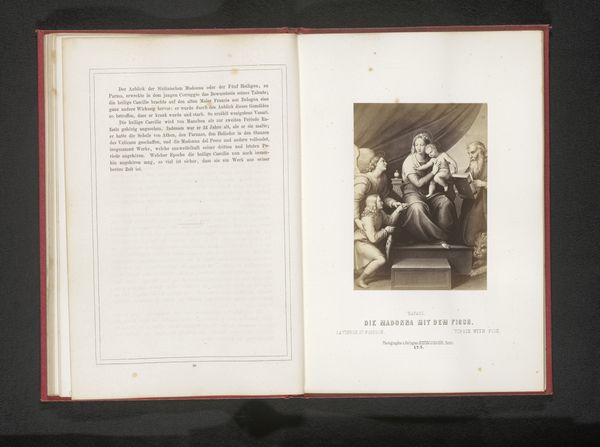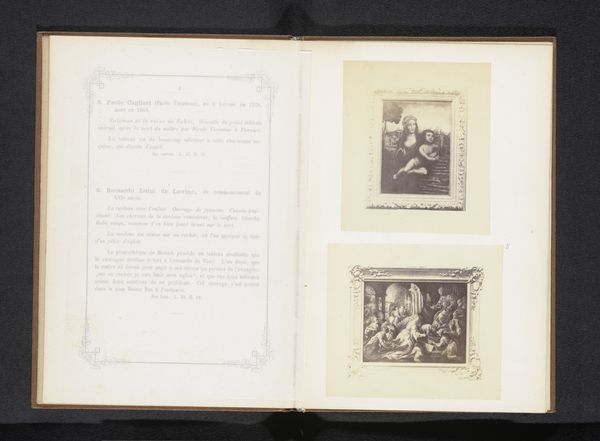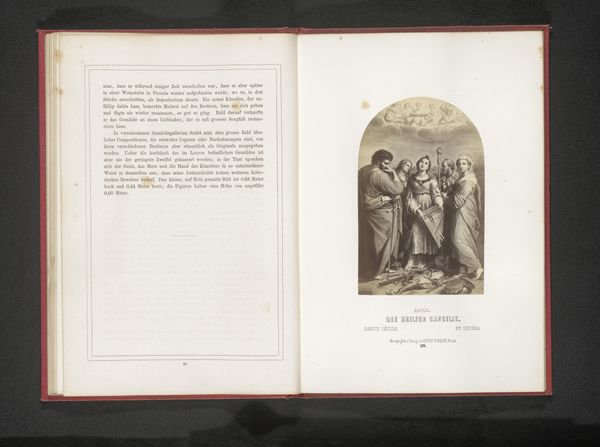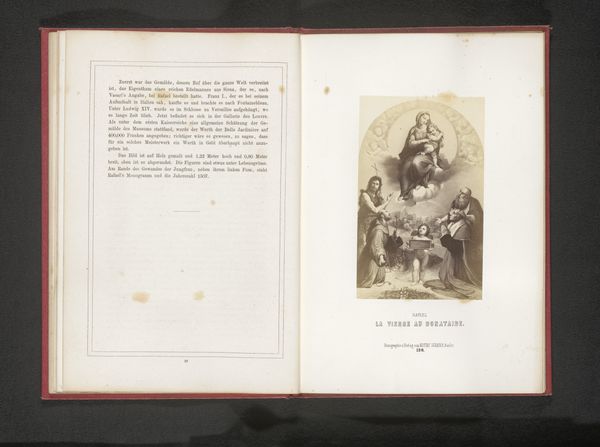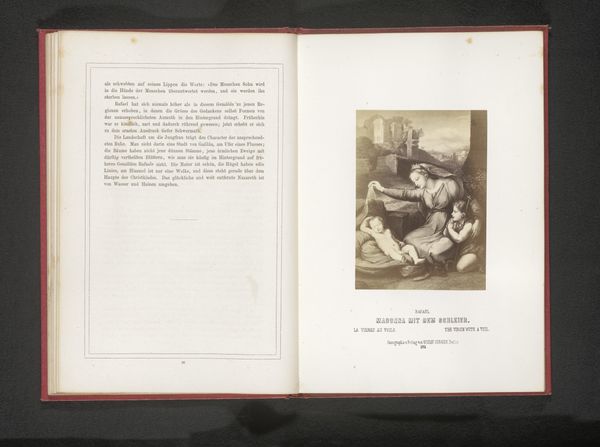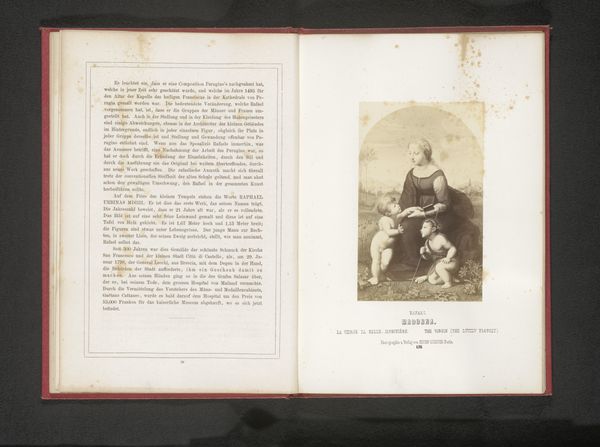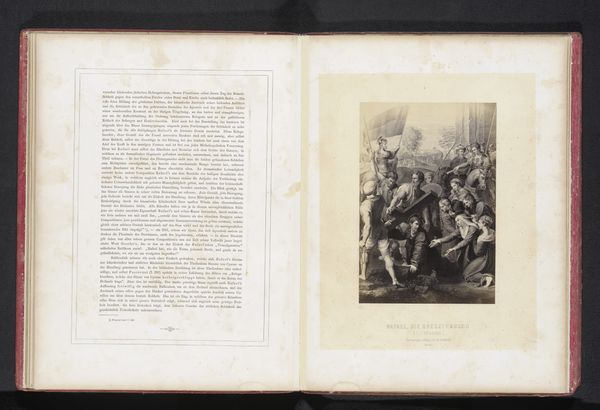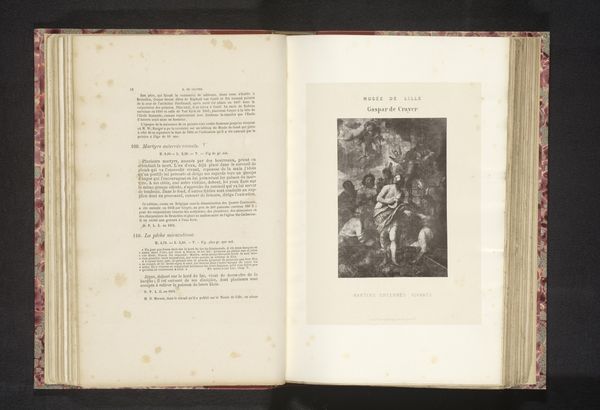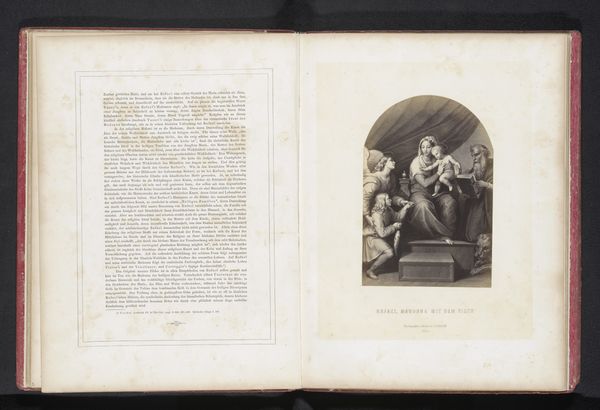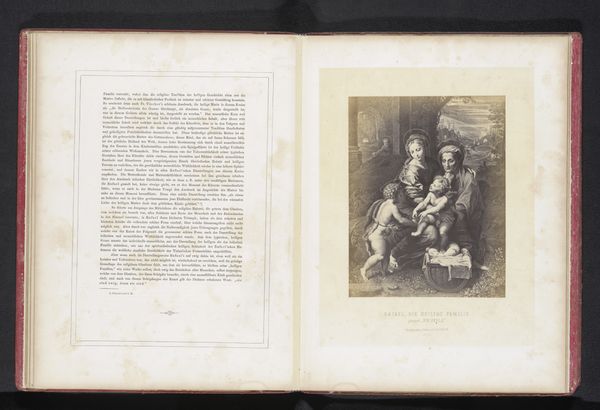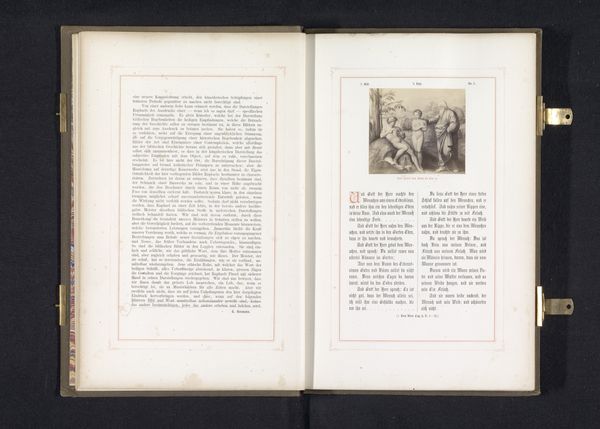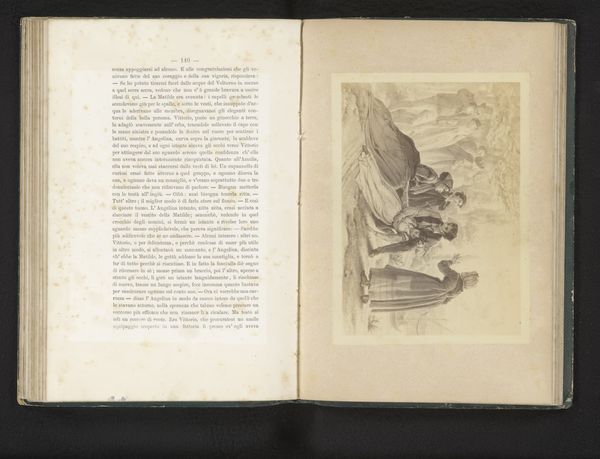
Fotoreproductie van een prent naar een schilderij, voorstellende de Heilige Familie before 1861
0:00
0:00
print, engraving
# print
#
figuration
#
history-painting
#
engraving
Dimensions: height 116 mm, width 85 mm
Copyright: Rijks Museum: Open Domain
Editor: So, here we have "Fotoreproductie van een prent naar een schilderij, voorstellende de Heilige Familie," or "Photographic reproduction of a print after a painting, depicting the Holy Family" made before 1861 by Gustav Schauer, it's an engraving. I'm immediately struck by its sentimental quality. All the figures seem caught in a moment of tenderness and deep emotion. What social narratives do you think this artwork engages with? Curator: This piece presents the Holy Family not just as a religious icon, but as an idealization of the traditional family unit. Consider the time this print was made, prior to 1861. The rise of industrialization brought with it anxieties around the shifting roles of men and women, anxieties about morality, gender, and power structures. So what purpose could an artwork like this serve at that time? Editor: Hmm, perhaps as a way to reinforce societal norms and expectations about family roles and behaviors. A kind of… conservative visual propaganda, if you will? Curator: Precisely! Notice how the visual rhetoric constructs a very specific image of domesticity, reinforcing perhaps unconsciously particular ideas of labor, care, and dependence that served the patriarchal structure of society at that time. Consider the women: Are they active agents? Are they confined to domestic roles? Editor: Right, they’re completely bound to caring, nurturing roles while the male figures seem… distant. I hadn’t thought about it that way. Curator: Now consider, who would likely purchase this kind of print? Editor: Probably members of the emerging middle class? A way to perform piety and good taste? Curator: Exactly. By situating the Holy Family within a domestic scene, this print attempts to legitimize a specific bourgeois social structure by linking it with religious authority. The composition becomes a tool, a means to communicate dominant ideology. Editor: It’s amazing how one image can be so layered with meaning, reflecting the social and political currents of its time. It really pushes me to analyze art in a whole new context!
Comments
No comments
Be the first to comment and join the conversation on the ultimate creative platform.

